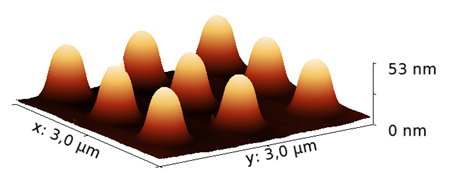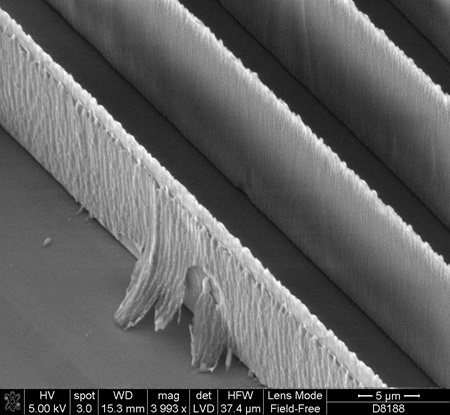The interest in advanced dry etching processes for micro/nano-structuring of metals, metal oxides or nitrides, and polymers has increased as these materials are introduced into many new devices. Dry etching can be separated in two effects: chemical and physical etching. Chemical etching is dependent on the reactive species in the plasma and the material to be etched, with oxygen, fluorine, chlorine, and bromide are the reactants commonly used. In order to remove material the chemical reactions must generate volatile species that are desorbed and can be pumped out of the etch chamber.
Physical etching removes material by knocking molecular fragments off the surface due to high impact energy. The type of etching species is not as critical for physical etching, and to eliminate chemical reactions and inert noble gas is preferred. It is possible to achieve an improved etch by combining the two etching regimes, which result in synergetic effects with vastly improved etch rate and structure definition as an outcome.
The materials for which dry etching processes have been or will be optimized dependent on user demand. An etch process for a magnetic system for use in Mikkel Hansen group has been developed on the IonFab 300+ IBE etching system. Polymers are used by many groups, and an etch process for SU-8 has been developed, and work on other polymers such as TOPAS® and PCL is in progress.

AFM image of patterned saphire. Sapphire is notoriously hard to pattern, however, by using a BCl3/Cl2 plasma, it is possible to structure a sapphire substrate.

Scanning electron microscope image of patterned SU-8 resist. Dry etching can be used to increase the aspect ratio of photolithography defined resist such as SU-8.